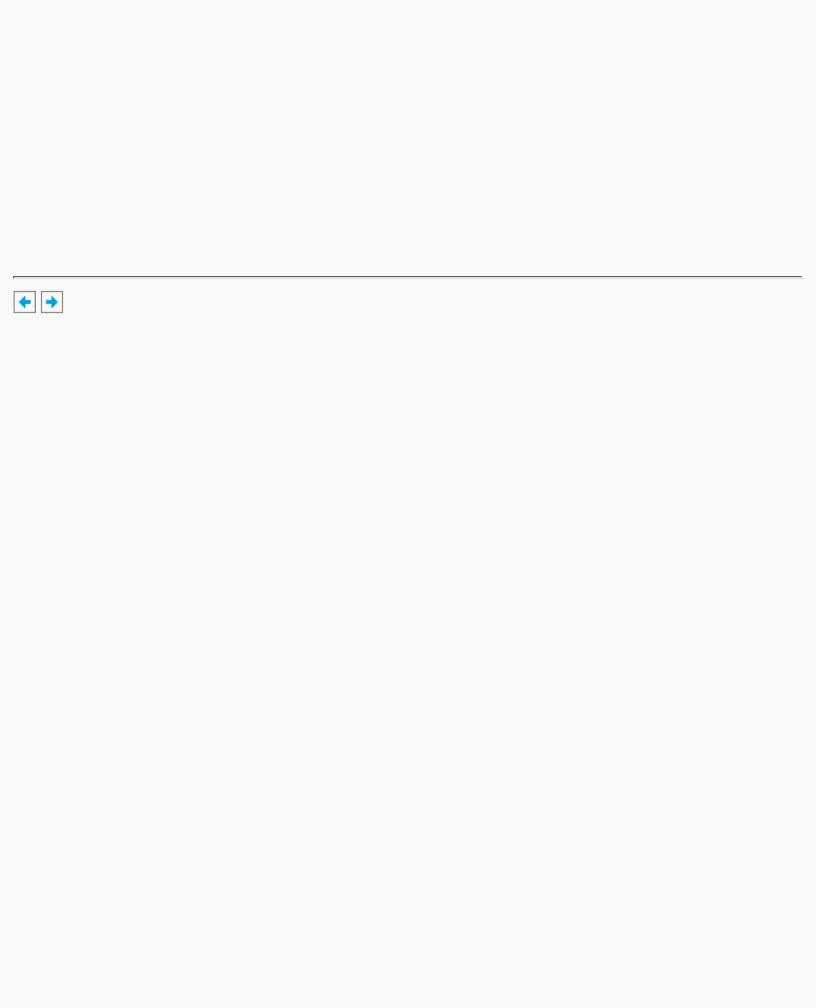
The Official Guide to Learning OpenGL, Version 1.1 (Redbook Second Edition)
.pdf
OpenGL Programming Guide (Addison-Wesley Publishing Company)
Managing an OpenGL Rendering Context
An OpenGL rendering context is created with pglCreateContext(). One of the arguments to this routine allows you to request a direct rendering context that bypasses the Gpi and render to a PM window, which is generally faster. You can determine whether a OpenGL context is direct with pglIsIndirect().
To make a rendering context current, use pglMakeCurrent(); pglGetCurrentContext() returns the current context. You can also obtain the current window with pglGetCurrentWindow(). You can copy some OpenGL state variables from one context to another with pglCopyContext(). When you're finished with a particular context, destroy it with pglDestroyContext().
Access the Bitmap of the Front Buffer
To lock access to the bitmap representation of the contents of the front buffer, use pglGrabFrontBitmap(). An implicit glFlush() is performed, and you can read the bitmap, but its contents are effectively read-only. Immediately after access is completed, you should call pglReleaseFrontBitmap() to restore write access to the front buffer.
Synchronizing Execution
To prevent Gpi rendering requests from executing until any outstanding OpenGL rendering is completed, call pglWaitGL(). Then, any previously issued OpenGL commands are guaranteed to be executed before any Gpi rendering calls made after pglWaitGL().
To prevent an OpenGL command sequence from executing until any outstanding Gpi requests are completed, use pglWaitPM(). This routine guarantees that previously issued Gpi rendering calls are executed before any OpenGL calls made after pglWaitPM().
Note: OpenGL and Gpi rendering can be integrated in the same window only if the OpenGL context is an indirect context.
Swapping Buffers
For windows that are double-buffered, the front and back buffers can be exchanged by calling pglSwapBuffers(). An implicit glFlush() is done as part of this routine.
Using a Color Index Palette
When you are running in 8-bit (256 color) mode, you have to worry about color palette management. For windows with a color index Visual Configuration, call pglSelectColorIndexPalette() to tell OpenGL what color-index palette you want to use with your context. A color palette must be selected before the context is initially bound to a window. In RGBA mode, OpenGL sets up a palette automatically.
Using an OS/2 Logical Font
A shortcut for using OS/2 logical fonts in OpenGL is provided with the command pglUseFont(). This routine builds display lists, each of which calls glBitmap(), for each requested character from the
http://heron.cc.ukans.edu/ebt-bin/nph-dweb/dynaw...Generic__BookTextView/34575;cs=fullhtml;pt=29704 (9 of 14) [4/28/2000 9:50:59 PM]

OpenGL Programming Guide (Addison-Wesley Publishing Company)
specified font and font size.
PGL Prototypes
Initialization
Determine whether OpenGL is supported and, if so, its version number: long pglQueryCapability (HAB hab);
void pglQueryVersion (HAB hab, int *major, int *minor); Visual configuration selection, availability and capability: PVISUALCONFIG pglChooseConfig (HAB hab, int *attribList); PVISUALCONFIG * pglQueryConfigs (HAB hab);
Controlling Rendering
Manage or query an OpenGL rendering context:
HGC pglCreateContext (HAB hab, PVISUALCONFIG pVisualConfig, HGC shareList, Bool isDirect);
Bool pglDestroyContext (HAB hab, HGC hgc);
Bool pglCopyContext (HAB hab, HGC source, HGC dest, GLuint mask); Bool pglMakeCurrent (HAB hab, HGC hgc, HWND hwnd);
long pglIsIndirect (HAB hab, HGC hgc); HGC pglGetCurrentContext (HAB hab); HWND pglGetCurrentWindow (HAB hab);
Access and release the bitmap of the front buffer:
Bool pglGrabFrontBitmap (HAB hab, HPS *hps, HBITMAP *phbitmap); Bool pglReleaseFrontBitmap (HAB hab);
Synchronize execution:
HPS pglWaitGL (HAB hab); void pglWaitPM (HAB hab); Exchange front and back buffers:
void pglSwapBuffers (HAB hab, HWND hwnd); Finding a color-index palette:
http://heron.cc.ukans.edu/ebt-bin/nph-dweb/dynaw...Generic__BookTextView/34575;cs=fullhtml;pt=29704 (10 of 14) [4/28/2000 9:50:59 PM]

OpenGL Programming Guide (Addison-Wesley Publishing Company)
void pglSelectColorIndexPalette (HAB hab, HPAL, hpal, HGC hgc);
Use an OS/2 logical font:
Bool pglUseFont (HAB hab, HPS hps, FATTRS *fontAttribs, long logicalId, int first, int count, int listBase);
WGL: OpenGL Extension for Microsoft Windows NT and Windows 95
OpenGL rendering is supported on systems that run Microsoft Windows NT and Windows 95. The functions and routines of the Win32 library are necessary to initialize the pixel format and control rendering for OpenGL. Some routines, which are prefixed by wgl, extend Win32 so that OpenGL can be fully supported.
For Win32/WGL, the PIXELFORMATDESCRIPTOR is the key data structure to maintain pixel format information about the OpenGL window. A variable of data type PIXELFORMATDESCRIPTOR keeps track of pixel information, including pixel type (RGBA or color index), singleor doublebuffering, resolution of colors, and presence of depth, stencil, and accumulation buffers.
To get more information about WGL, you may want to start with technical articles available through the Microsoft Developer Network at
http://www.microsoft.com/msdn/
Initialization
Use GetVersion() or the newer GetVersionEx() to determine version information. ChoosePixelFormat() tries to find a PIXELFORMATDESCRIPTOR with specified attributes. If a good match for the requested pixel format is found, then SetPixelFormat() should be called to actually use the pixel format. You should select a pixel format in the device context before calling wglCreateContext().
If you want to find out details about a given pixel format, use DescribePixelFormat() or, for overlays or underlays, wglDescribeLayerPlane().
Controlling Rendering
Several WGL routines are provided for creating and managing an OpenGL rendering context, rendering to a bitmap, swapping front and back buffers, finding a color palette, and using either bitmap or outline fonts.
Managing an OpenGL Rendering Context
wglCreateContext() creates an OpenGL rendering context for drawing on the device in the selected pixel format of the device context. (To create an OpenGL rendering context for overlay or underlay windows, use wglCreateLayerContext() instead.) To make a rendering context current, use
http://heron.cc.ukans.edu/ebt-bin/nph-dweb/dynaw...Generic__BookTextView/34575;cs=fullhtml;pt=29704 (11 of 14) [4/28/2000 9:50:59 PM]

OpenGL Programming Guide (Addison-Wesley Publishing Company)
wglMakeCurrent(); wglGetCurrentContext() returns the current context. You can also obtain the current device context with wglGetCurrentDC(). You can copy some OpenGL state variables from one context to another with wglCopyContext() or make two contexts share the same display lists and texture objects with wglShareLists(). When you're finished with a particular context, destroy it with wglDestroyContext().
OpenGL Rendering to a Bitmap
Win32 has a few routines to allocate (and deallocate) bitmaps, to which you can render OpenGL directly. CreateDIBitmap() creates a device-dependent bitmap (DDB) from a device-independent bitmap (DIB). CreateDIBSection() creates a device-independent bitmap (DIB) that applications can write to directly.
When finished with your bitmap, you can use DeleteObject() to free it up.
Synchronizing Execution
If you want to combine GDI and OpenGL rendering, be aware there are no equivalents to functions like glXWaitGL(), glXWaitX(), or pglWaitGL() in Win32. Although glXWaitGL() has no equivalent in Win32, you can achieve the same effect by calling glFinish(), which waits until all pending OpenGL commands are executed, or by calling GdiFlush(), which waits until all GDI drawing has completed.
Swapping Buffers
For windows that are double-buffered, the front and back buffers can be exchanged by calling SwapBuffers() or wglSwapLayerBuffers(); the latter for overlays and underlays.
Finding a Color Palette
To access the color palette for the standard (non-layer) bitplanes, use the standard GDI functions to set the palette entries. For overlay or underlay layers, use wglRealizeLayerPalette(), which maps palette entries from a given color-index layer plane into the physical palette or initializes the palette of an RGBA layer plane. wglGetLayerPaletteEntries() is used to query the entries in palettes of layer planes.
Using a Bitmap or Outline Font
WGL has two routines, wglUseFontBitmaps() and wglUseFontOutlines(), for converting system fonts to use with OpenGL. Both routines build a display list for each requested character from the specified font and font size.
WGL Prototypes
Initialization
Determine version information:
BOOL GetVersion ( LPOSVERSIONINFO lpVersionInformation );
BOOL GetVersionEx ( LPOSVERSIONINFO lpVersionInformation );
http://heron.cc.ukans.edu/ebt-bin/nph-dweb/dynaw...Generic__BookTextView/34575;cs=fullhtml;pt=29704 (12 of 14) [4/28/2000 9:50:59 PM]

OpenGL Programming Guide (Addison-Wesley Publishing Company)
Pixel format availability, selection, and capability:
int ChoosePixelFormat ( HDC hdc,
CONST PIXELFORMATDESCRIPTOR * ppfd );
BOOL SetPixelFormat ( HDC hdc, int iPixelFormat,
CONST PIXELFORMATDESCRIPTOR * ppfd );
int DescribePixelFormat ( HDC hdc, int iPixelFormat, UINT nBytes, LPPIXELFORMATDESCRIPTOR ppfd );
BOOL wglDescribeLayerPlane ( HDC hdc, int iPixelFormat,
int iLayerPlane, UINT nBytes, LPLAYERPLANEDESCRIPTOR plpd );
Controlling Rendering
Manage or query an OpenGL rendering context:
HGLRC wglCreateContext ( HDC hdc );
HGLRC wglCreateLayerContext ( HDC hdc, int iLayerPlane );
BOOL wglShareLists ( HGLRC hglrc1, HGLRC hglrc2 );
BOOL wglDeleteContext ( HGLRC hglrc );
BOOL wglCopyContext ( HGLRC hglrcSource, HGLRC hlglrcDest, UINT mask );
BOOL wglMakeCurrent ( HDC hdc, HGLRC hglrc );
HGLRC wglGetCurrentContext (VOID) ;
HDC wglGetCurrentDC (VOID);
Access and release the bitmap of the front buffer:
HBITMAP CreateDIBitmap ( HDC hdc,
CONST BITMAPINFOHEADER *lpbmih, DWORD fdwInit,
CONST VOID *lpbInit, CONST BITMAPINFO *lpbmi, UINT fuUsage );
HBITMAP CreateDIBSection ( HDC hdc, CONST BITMAPINFO *pbmi, UINT iUsage, VOID *ppvBits, HANDLE hSection, DWORD dwOffset );
BOOL DeleteObject ( HGDIOBJ hObject );
Exchange front and back buffers:
BOOL SwapBuffers ( HDC hdc );
BOOL wglSwapLayerBuffers ( HDC hdc, UINT fuPlanes );
Finding a color palette for overlay or underlay layers:
http://heron.cc.ukans.edu/ebt-bin/nph-dweb/dynaw...Generic__BookTextView/34575;cs=fullhtml;pt=29704 (13 of 14) [4/28/2000 9:50:59 PM]

OpenGL Programming Guide (Addison-Wesley Publishing Company)
int wglGetLayerPaletteEntries ( HDC hdc, int iLayerPlane, int iStart, int cEntries, CONST COLORREF *pcr );
BOOL wglRealizeLayerPalette ( HDC hdc, int iLayerPlane,
BOOL bRealize );
Use a bitmap or an outline font:
BOOL wglUseFontBitmaps ( HDC hdc, DWORD first, DWORD count,
DWORD listBase );
BOOL wglUseFontOutlines ( HDC hdc, DWORD first, DWORD count,
DWORD listBase, FLOAT deviation, FLOAT extrusion, int format,
LPGLYPHMETRICSFLOAT lpgmf );
OpenGL Programming Guide (Addison-Wesley Publishing Company)
http://heron.cc.ukans.edu/ebt-bin/nph-dweb/dynaw...Generic__BookTextView/34575;cs=fullhtml;pt=29704 (14 of 14) [4/28/2000 9:50:59 PM]

OpenGL Programming Guide (Addison-Wesley Publishing Company)
OpenGL Programming Guide (Addison-Wesley Publishing Company)
Appendix D
Basics of GLUT: The OpenGL Utility
Toolkit
This appendix describes a subset of Mark Kilgard's OpenGL Utility Toolkit (GLUT), which is fully documented in his book, OpenGL Programming for the X Window System (Reading, MA: Addison-Wesley Developers Press, 1996). GLUT has become a popular library for OpenGL programmers, because it standardizes and simplifies window and event management. GLUT has been ported atop a variety of OpenGL implementations, including both the X Window System and Microsoft Windows NT.
This appendix has the following major sections:
●"Initializing and Creating a Window"
●"Handling Window and Input Events"
●"Loading the Color Map"
●"Initializing and Drawing Three-Dimensional Objects"
●"Managing a Background Process"
●"Running the Program"
(See "How to Obtain the Sample Code" in the Preface for information about how to obtain the source code for GLUT.)
With GLUT, your application structures its event handling to use callback functions. (This method is similar to using the Xt Toolkit, also known as the X Intrinsics, with a widget set.) For example, first you open a window and register callback routines for specific events. Then, you create a main loop without an exit. In that loop, if an event occurs, its registered callback functions are executed. Upon completion of the callback functions, flow of control is returned to the main loop.
http://heron.cc.ukans.edu/ebt-bin/nph-dweb/dynaw...Generic__BookTextView/36440;cs=fullhtml;pt=34575 (1 of 5) [4/28/2000 9:51:12 PM]

OpenGL Programming Guide (Addison-Wesley Publishing Company)
Initializing and Creating a Window
Before you can open a window, you must specify its characteristics: Should it be single-buffered or double-buffered? Should it store colors as RGBA values or as color indices? Where should it appear on your display? To specify the answers to these questions, call glutInit(), glutInitDisplayMode(), glutInitWindowSize(), and glutInitWindowPosition() before you call glutCreateWindow() to open the window.
void glutInit(int argc, char **argv);
glutInit() should be called before any other GLUT routine, because it initializes the GLUT library. glutInit() will also process command line options, but the specific options are window system dependent. For the X Window System, -iconic, -geometry, and -display are examples of command line options, processed by glutInit(). (The parameters to the glutInit() should be the same as those to main().)
void glutInitDisplayMode(unsigned int mode);
Specifies a display mode (such as RGBA or color-index, or singleor double-buffered) for windows created when glutCreateWindow() is called. You can also specify that the window have an associated depth, stencil, and/or accumulation buffer. The mask argument is a bitwise ORed combination of GLUT_RGBA or GLUT_INDEX, GLUT_SINGLE or GLUT_DOUBLE, and any of the buffer-enabling flags: GLUT_DEPTH, GLUT_STENCIL, or GLUT_ACCUM. For example, for a double-buffered, RGBA-mode window with a depth and stencil buffer, use GLUT_DOUBLE |
GLUT_RGBA | GLUT_DEPTH | GLUT_STENCIL. The default value is GLUT_RGBA | GLUT_SINGLE (an RGBA, single-buffered window).
void glutInitWindowSize(int width, int height); void glutInitWindowPosition(int x, int y);
Requests windows created by glutCreateWindow() to have an initial size and position. The arguments (x, y) indicate the location of a corner of the window, relative to the entire display. The width and height indicate the window's size (in pixels). The initial window size and position are hints and may be overridden by other requests.
int glutCreateWindow(char *name);
Opens a window with previously set characteristics (display mode, width, height, and so on). The string name may appear in the title bar if your window system does that sort of thing. The window is not initially displayed until glutMainLoop() is entered, so do not render into the window until then.
The value returned is a unique integer identifier for the window. This identifier can be used for controlling and rendering to multiple windows (each with an OpenGL rendering context) from the same application.
http://heron.cc.ukans.edu/ebt-bin/nph-dweb/dynaw...Generic__BookTextView/36440;cs=fullhtml;pt=34575 (2 of 5) [4/28/2000 9:51:12 PM]

OpenGL Programming Guide (Addison-Wesley Publishing Company)
Handling Window and Input Events
After the window is created, but before you enter the main loop, you should register callback functions using the following routines.
void glutDisplayFunc(void (*func)(void));
Specifies the function that's called whenever the contents of the window need to be redrawn. The contents of the window may need to be redrawn when the window is initially opened, when the window is popped and window damage is exposed, and when glutPostRedisplay() is explicitly called.
void glutReshapeFunc(void (*func)(int width, int height));
Specifies the function that's called whenever the window is resized or moved. The argument func is a pointer to a function that expects two arguments, the new width and height of the window.
Typically, func calls glViewport(), so that the display is clipped to the new size, and it redefines the projection matrix so that the aspect ratio of the projected image matches the viewport, avoiding aspect ratio distortion. If glutReshapeFunc() isn't called or is deregistered by passing NULL, a default reshape function is called, which calls glViewport(0, 0, width, height).
void glutKeyboardFunc(void (*func)(unsigned int key, int x, int y);
Specifies the function, func, that's called when a key that generates an ASCII character is pressed.
The key callback parameter is the generated ASCII value. The x and y callback parameters indicate the location of the mouse (in window-relative coordinates) when the key was pressed.
void glutMouseFunc(void (*func)(int button, int state, int x, int y));
Specifies the function, func, that's called when a mouse button is pressed or released. The button callback parameter is one of GLUT_LEFT_BUTTON, GLUT_MIDDLE_BUTTON, or GLUT_RIGHT_BUTTON. The state callback parameter is either GLUT_UP or GLUT_DOWN, depending upon whether the mouse has been released or pressed. The x and y callback parameters indicate the location (in window-relative coordinates) of the mouse when the event occurred.
void glutMotionFunc(void (*func)(int x, int y));
Specifies the function, func, that's called when the mouse pointer moves within the window while one or more mouse buttons is pressed. The x and y callback parameters indicate the location (in window-relative coordinates) of the mouse when the event occurred.
void glutPostRedisplay(void);
Marks the current window as needing to be redrawn. At the next opportunity, the callback function registered by glutDisplayFunc() will be called.
Loading the Color Map
If you're using color-index mode, you might be surprised to discover there's no OpenGL routine to load a color into a color lookup table. This is because the process of loading a color map depends entirely on the window system. GLUT provides a generalized routine to load a single color index with an RGB value, glutSetColor().
http://heron.cc.ukans.edu/ebt-bin/nph-dweb/dynaw...Generic__BookTextView/36440;cs=fullhtml;pt=34575 (3 of 5) [4/28/2000 9:51:12 PM]

OpenGL Programming Guide (Addison-Wesley Publishing Company)
void glutSetColor(GLint index, GLfloat red, GLfloat green, GLfloat blue);
Loads the index in the color map, index, with the given red, green, and blue values. These values are normalized to lie in the range [0.0,1.0].
Initializing and Drawing Three-Dimensional Objects
Many sample programs in this guide use three-dimensional models to illustrate various rendering properties. The following drawing routines are included in GLUT to avoid having to reproduce the code to draw these models in each program. The routines render all their graphics in immediate mode. Each three-dimensional model comes in two flavors: wireframe without surface normals, and solid with shading and surface normals. Use the solid version when you're applying lighting. Only the teapot generates texture coordinates.
void glutWireSphere(GLdouble radius, GLint slices, GLint stacks); void glutSolidSphere(GLdouble radius, GLint slices, GLint stacks);
void glutWireCube(GLdouble size); void glutSolidCube(GLdouble size);
void glutWireTorus(GLdouble innerRadius, GLdouble outerRadius,
GLint nsides, GLint rings);
void glutSolidTorus(GLdouble innerRadius, GLdouble outerRadius, GLint nsides, GLint rings);
void glutWireIcosahedron(void); void glutSolidIcosahedron(void);
void glutWireOctahedron(void); void glutSolidOctahedron(void);
void glutWireTetrahedron(void); void glutSolidTetrahedron(void);
void glutWireDodecahedron(GLdouble radius); void glutSolidDodecahedron(GLdouble radius);
void glutWireCone(GLdouble radius, GLdouble height, GLint slices, GLint stacks);
void glutSolidCone(GLdouble radius, GLdouble height, GLint slices,
GLint stacks);
void glutWireTeapot(GLdouble size); void glutSolidTeapot(GLdouble size);
Managing a Background Process
You can specify a function that's to be executed if no other events are pending - for example, when the event loop would otherwise be idle - with glutIdleFunc(). This is particularly useful for continuous animation or other background processing.
http://heron.cc.ukans.edu/ebt-bin/nph-dweb/dynaw...Generic__BookTextView/36440;cs=fullhtml;pt=34575 (4 of 5) [4/28/2000 9:51:12 PM]
